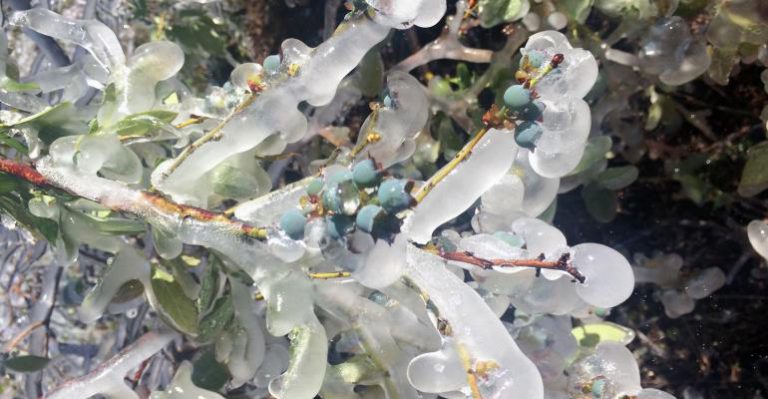By Clint Thompson
Late spring freeze events have become predictable across the Southeast. Unfortunately, that has not been good news for the region’s blueberry producers.

Blueberries are susceptible to sub-freezing temperatures this time of year. They are starting to bear fruit and are on the cusp of another harvest season.
The danger has intensified in recent years as bushes bloom earlier in response to warmer temperatures in February, says Jonathan Oliver, University of Georgia (UGA) assistant professor and small fruits pathologist.
“On a year where we have bloom even earlier, there’s more winter left to have a freeze. The blooms get more and more vulnerable to freeze as they get older. Once you have actual green fruit there, the green fruit really can’t handle anything below freezing. They get more and more vulnerable as they develop,” Oliver said.
“When development happens earlier and they’re more vulnerable earlier in the season, that’s when we can have problems. Last season, though, I think things were actually fairly late and we still had a late enough freeze where it caused massive damage. It can still cause damage in those years, but you still have a longer window of concern when they develop early.”
Management options are available to protect against cold temperatures and blistery wind conditions, but they are not 100% effective.
“As far as protection of the plants from cold damage, irrigation or freeze protection is really the primary way to deal with that issue. If you can encase the berries in ice, you can protect them down to a certain temperature. It’s the same thing with the blooms. Those are the only great ways to provide control. Last year we saw it could get cold enough or the wind can be blowing enough where those things even aren’t effective enough to protect the crop,” Oliver said.









